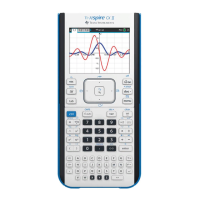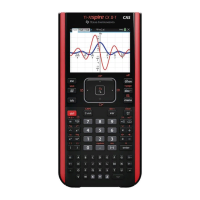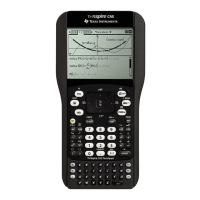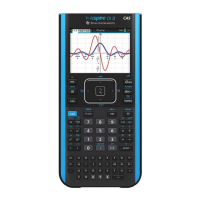TI-Nspire™ Reference Guide 7
Integer1 and Integer2 ⇒ integer
Compares two real integers bit-by-bit using an and operation.
Internally, both integers are converted to signed, 64-bit binary
numbers. When corresponding bits are compared, the result is 1 if
both bits are 1; otherwise, the result is 0. The returned value
represents the bit results, and is displayed according to the Base
mode.
You can enter the integers in any number base. For a binary or
hexadecimal entry, you must use the 0b or 0h prefix, respectively.
Without a prefix, integers are treated as decimal (base 10).
In Hex base mode:
Important: Zero, not the letter O.
In Bin base mode:
In Dec base mode:
Note: A binary entry can have up to 64 digits (not counting the
0b prefix). A hexadecimal entry can have up to 16 digits.
angle()
Catalog
>
angle(Va lu e 1) ⇒ value
Returns the angle of the argument, interpreting the argument as a
complex number.
In Degree angle mode:
In Gradian angle mode:
In Radian angle mode:
angle(List1) ⇒ list
angle(Matrix1) ⇒ matrix
Returns a list or matrix of angles of the elements in List1 or Matrix1,
interpreting each element as a complex number that represents a
two-dimensional rectangular coordinate point.
ANOVA
Catalog
>
ANOVA List1,List2[,List3,...,List20][,Flag]
Performs a one-way analysis of variance for comparing the means of
two to 20 populations. A summary of results is stored in the
stat.results variable. (See page 97.)
Flag=0 for Data, Flag=1 for Stats
Output variable Description
stat.F Value of the F statistic
stat.PVal Smallest level of significance at which the null hypothesis can be rejected
stat.df Degrees of freedom of the groups
stat.SS Sum of squares of the groups
stat.MS Mean squares for the groups
stat.dfError Degrees of freedom of the errors
and
Catalog
>

